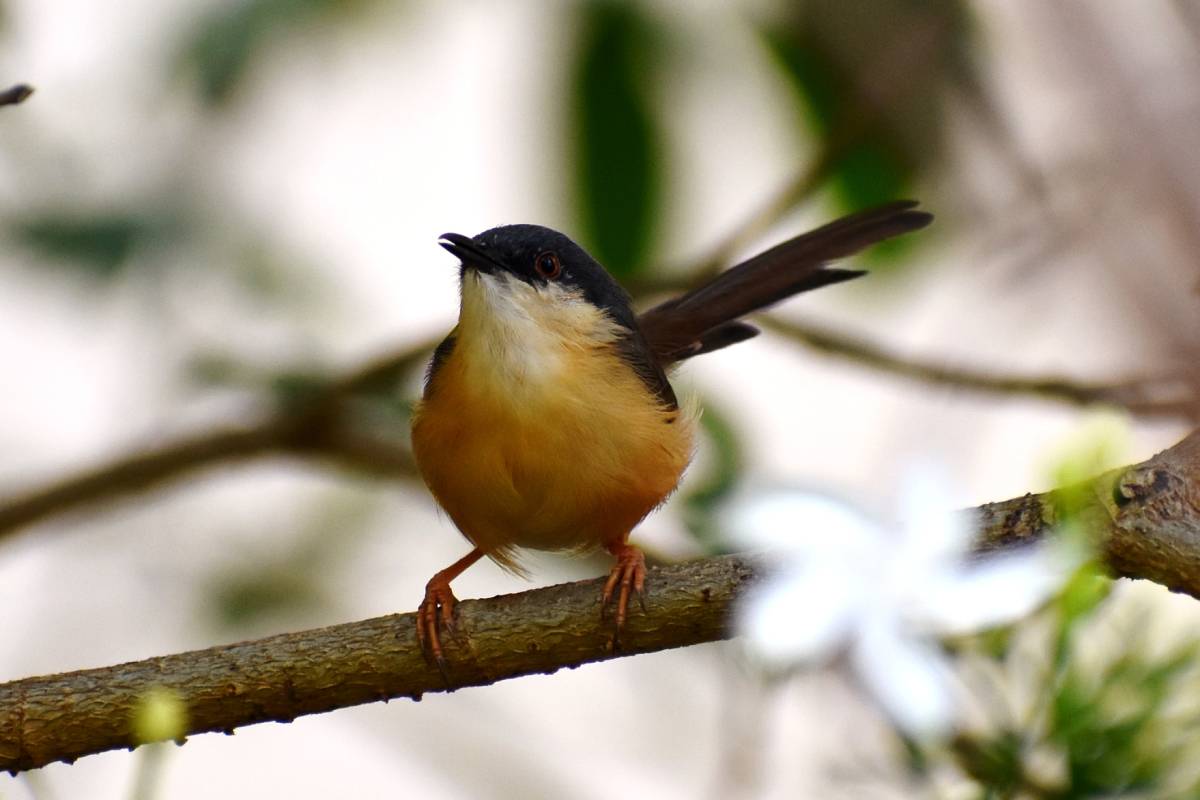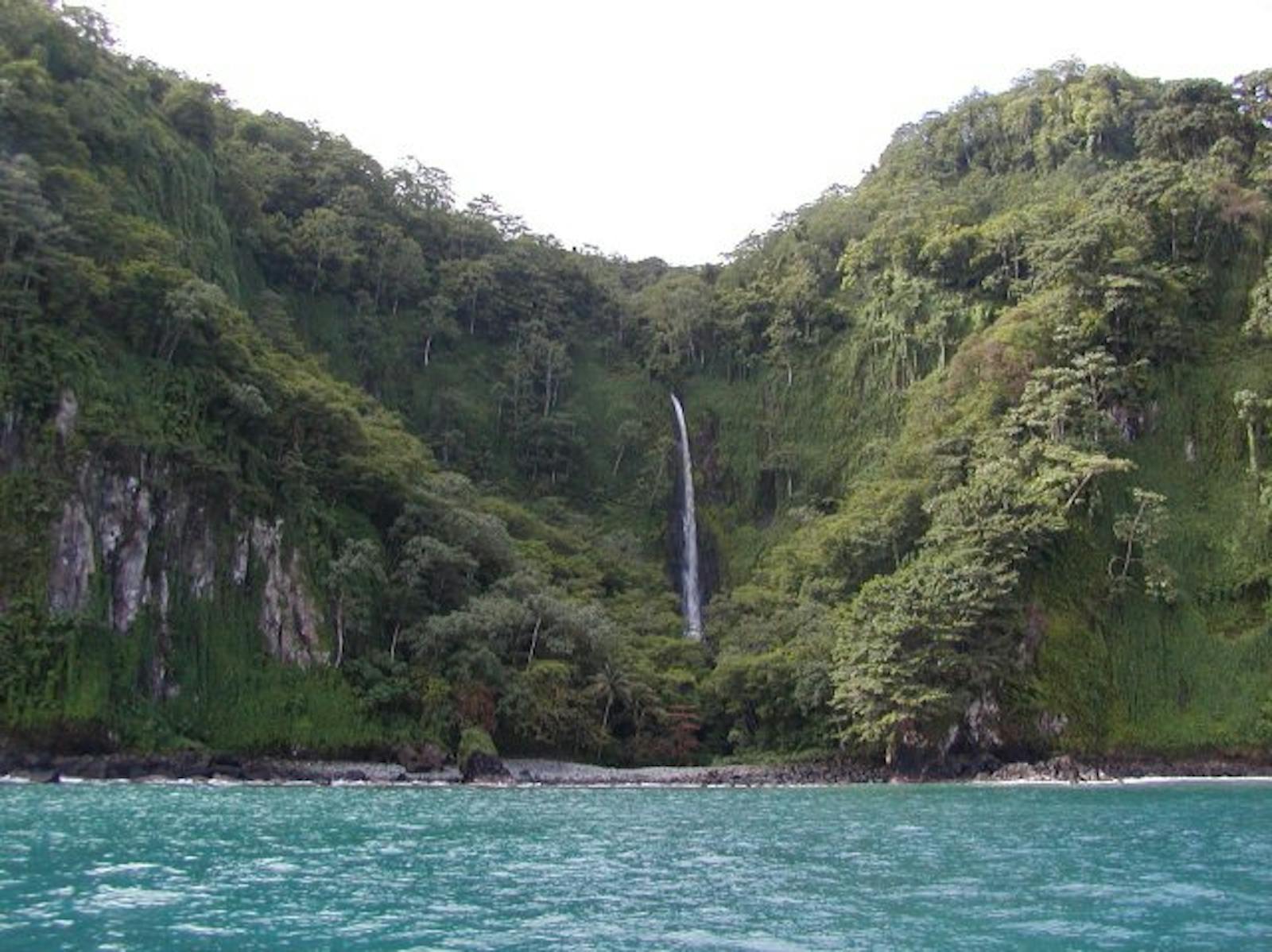Cocos Island Moist Forests
The ecoregion’s land area is provided in units of 1,000 hectares. The protection goal is the Global Safety Net (GSN1) area for the given ecoregion. The protection level indicates the percentage of the GSN goal that is currently protected on a scale of 0-10.
Bioregion: Central American Mixed Forests (NT25)
Realm: Central America
Ecoregion Size (1000 ha):
2
Ecoregion ID:
455
Conservation Target:
100%
Protection Level:
13
States: Costa Rica
One of the many endemic species found on the isolated Cocos island, the Cocos cuckoo be seen navigating through the streamside vine and hibiscus tangles looking for its favorite prey: small native anole lizards. The land bird can easily be distinguished by the unique black-and-white “scalloped” under feather patterns on its tail, or the deep, coughing “kcha” sound it makes to warn others of its territory. Aside from lizards it also eats insects and hops and runs through the vegetation chasing them. Like many endemic species on Cocos Island, very little is known of its ecology and natural history.
Cocos Island in the central-eastern Pacific Ocean lies 523 km southwest of Cabo Blanco, in Costa Rica. This small island measures 7.6 km long and 4.4 km across with a surface area of approximately 25 km2. The climate is warm and wet with an average temperature of 23.6oC, and an average annual rainfall of more than 6,000 mm. This island is formed by the only submarine volcano that has emerged from the Cocos tectonic plate. The topography is irregular with abundant waterways, cliffs, and caves. The maximum elevation is 634 m.
The island has a dense vegetative cover composed of three main plant formations. The coastal zone (under 50 m) includes apple, coconut, and coast coral trees as well as various ferns. In the mountainous areas (50–500 m), common species include "palo de hierro" (Sacoglottis holdridgei), avocado, and the endemic Cecropia pittieri trees. Above 500m, cloud forests characterized by the plant family Melastoma can be found.

The Cocos cuckoo (Coccyzus ferrugineus) is the flagship species of the Cocos Island Moist Forests ecoregion.
High endemism and low biodiversity are often a characteristic of island habitats. Cocos Island hosts around 235 species of plant with roughly 30% being endemic. There are 362 known species of insect with 18% being endemic. There are two land reptiles, an anole lizard (Anolis townsendii) and a gecko (Sphaerodactylus pacificus), both endemic. Amphibians are absent, which is not uncommon on islands far from continental landmasses.
Seven species of land bird have been recorded, among them, the Cocos cuckoo, Cocos flycatcher, and Cocos finch are all listed as vulnerable by IUCN and are endemic. Cocos Island is considered one of the 27 areas of avian endemism in Central America and the Caribbean because these endemic birds’ limited range confines them to this ecoregion alone. There are no native mammals on the island: the pigs, deer, goats, cats, and rats were introduced by humans.
The entire island was declared a National Park and Biological Reserve by the government of Costa Rica in 1978 and a World Heritage Site by UNESCO in 1997. Most of the island’s natural habitat can be considered intact, despite the negative influence of introduced plants and animals. The low relative biodiversity and isolation of this ecoregion make it particularly vulnerable to disturbances.
After two failed attempts to settle the island, it has remained free of permanent human occupation. The first settlers introduced different agricultural plant species as well as domestic animals and these continue to represent serious threats to the maintenance of the natural ecosystems. The crops introduced on the island include guava groves, coffee plantations, and cocoa plantations. The coffee plants in particular invade areas of undergrowth. Of the mammal species introduced, wild boars have the largest impact: they limit native plant distribution and destroy their root systems, resulting in increased erosion.
Priority conservation actions for the next decade:
- Manage the spread of introduced plant species.
- Reduce wild boar impact through population management
- Enact restoration efforts for areas altered by previous human occupation.
-
-
1. D’ambrosio, U. 2019. Central America: Off the coast of Costa Rica in the Pacific Ocean. https://www.worldwildlife.org/ecoregions/nt0116 Accessed January 14, 2019.
2. Cortés, F. 1986. Coco Island: Management and development plan. San José, Costa Rica: Service of National Parks.
3. BirdLife International 2016. Coccyzus ferrugineus. The IUCN Red List of Threatened Species 2016: e.T22684340A93026551. http://dx.doi.org/10.2305/IUCN.UK.2016-3.RLTS.T22684340A93026551.en. Accessed January 14, 2019. -
Cite this page: Cocos Island Moist Forests. Ecoregion Snapshots: Descriptive Abstracts of the Terrestrial Ecoregions of the World, 2021. Developed by One Earth and RESOLVE. https://www.oneearth.org/ecoregions/cocos-island-moist-forests/
-



